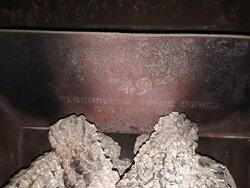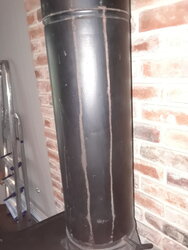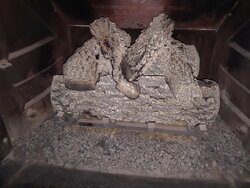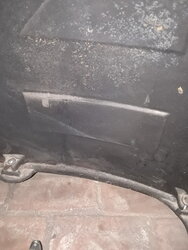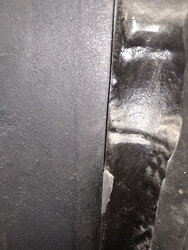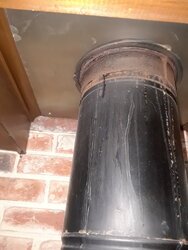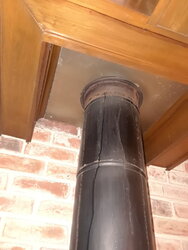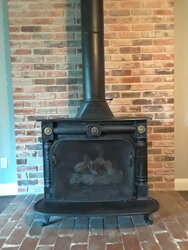I am trying to learn more about this stove and ask for advice about a couple issues with it.
Is there any way to find out the age of this stove? I understand this is an Olympic Franklin stove and it is marked '49.' I've included a photo of this. The house was built in 1957 and it's possible (more likely probable) that the stove dates to then. I am also not sure when it was converted to gas.
There are a few small cosmetic issues with the stove such as light rust on the flue (photo included) that looks like rivulets from heavy rain. I'm guessing that can be fixed with stove black, but maybe someone here can confirm that idea.
I also noticed that on the side of the stove, there is a visible piece of grey material sticking out from a seam. My initial thought is that this is probably insulation and possibly some type of asbestos cement/millboard given the possible age of the stove.
I know that this can't be determined by sight, but maybe someone can let me know if its possible this could be asbestos? If it's possible, I'm not sure how to deal with that as its sitting in our family room. I have included a photo of the largest piece, but there are a few smaller areas visible. The other side of the stove does not have any of this material visible.
Thanks for any help or knowledge you are willing to share.
Is there any way to find out the age of this stove? I understand this is an Olympic Franklin stove and it is marked '49.' I've included a photo of this. The house was built in 1957 and it's possible (more likely probable) that the stove dates to then. I am also not sure when it was converted to gas.
There are a few small cosmetic issues with the stove such as light rust on the flue (photo included) that looks like rivulets from heavy rain. I'm guessing that can be fixed with stove black, but maybe someone here can confirm that idea.
I also noticed that on the side of the stove, there is a visible piece of grey material sticking out from a seam. My initial thought is that this is probably insulation and possibly some type of asbestos cement/millboard given the possible age of the stove.
I know that this can't be determined by sight, but maybe someone can let me know if its possible this could be asbestos? If it's possible, I'm not sure how to deal with that as its sitting in our family room. I have included a photo of the largest piece, but there are a few smaller areas visible. The other side of the stove does not have any of this material visible.
Thanks for any help or knowledge you are willing to share.


